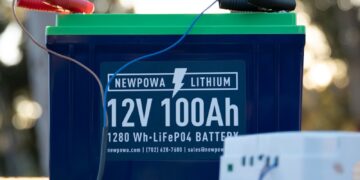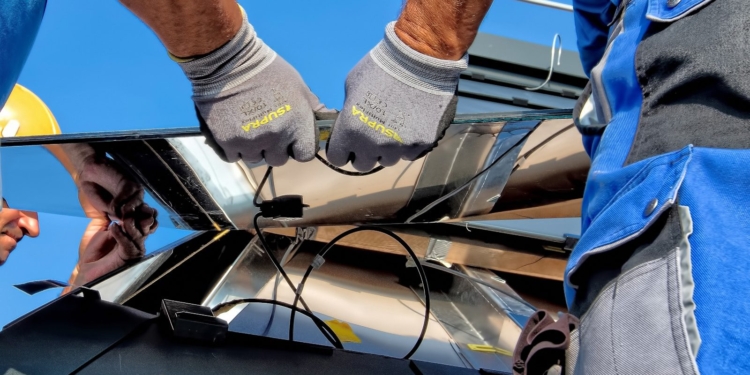Introduction
Nestlé, a global titan in food and beverage production, maintains a robust presence in California, a state celebrated for its agricultural abundance and forward-thinking environmental policies. With a diverse portfolio encompassing brands like Nescafé, KitKat, Purina, and Nestlé Waters, the company is deeply woven into California’s economic and social landscape. Beyond its manufacturing and distribution hubs, Nestlé is advancing sustainability through solar energy, battery storage, and cutting-edge technologies to minimize its environmental footprint. This article delves into Nestlé’s California operations, their partnership with Bolthouse Farms, the innovative AI-driven facility in Tejon Valley, and areas where further improvements could enhance their sustainability efforts. We also explore how Pacifico Energy, a leader in renewable energy solutions, could support Nestlé in addressing these gaps, driving the company toward a greener future.
Nestlé’s California Facilities: A Hub of Production and Innovation
Nestlé operates a network of facilities across California, each integral to its supply chain and commitment to quality. These sites produce everything from bottled water to pet food and serve as testing grounds for sustainable practices. Below is an overview of key facilities:
1. Nestlé Waters Facilities
Nestlé Waters, part of Nestlé’s beverage portfolio, operates several bottling plants in California:
- Cabazon Bottling Plant (Riverside County): This facility produces Arrowhead Mountain Spring Water, sourced from local springs, using advanced water management systems to minimize waste.
- Ontario Bottling Plant (San Bernardino County): Bottling brands like Pure Life and San Pellegrino, this plant prioritizes water conservation amid California’s drought challenges.
- Sacramento Bottling Plant: This site produces purified water and flavored beverages, incorporating energy-efficient technologies to reduce emissions.
These facilities adhere to strict water stewardship guidelines, aligning with California’s rigorous environmental standards. Nestlé reports a 30% reduction in water intensity across its California operations since 2010, driven by investments in recycling and conservation technologies.
2. Nestlé USA Food Production
Nestlé’s food production facilities focus on frozen meals, confections, and dairy:
- Bakersfield Facility: Producing Stouffer’s and Lean Cuisine meals, this plant uses energy-efficient refrigeration to lower its carbon footprint.
- Modesto Facility: A key hub for dairy and beverage production, manufacturing Coffee-Mate and Carnation, this site leads Nestlé’s zero-waste-to-landfill initiative, diverting over 95% of waste through recycling and composting.
3. Nestlé Purina PetCare
The Maricopa facility in Kern County produces Purina ONE and Pro Plan pet foods. It has integrated solar panels to power operations, supporting Nestlé’s global net-zero emissions goal by 2050.
4. Distribution and Logistics
Nestlé’s distribution centers in Los Angeles and Fresno streamline product delivery across the Western U.S. These centers employ electric vehicle fleets and optimized routing to reduce fuel consumption and emissions.
Bolthouse Farms: A Strategic Partnership
Acquired by Nestlé in 2001, Bolthouse Farms, headquartered in Bakersfield, California, is a leading producer of fresh carrots, juices, and smoothies. Its facilities include:
- Bakersfield Processing Plant: This site processes carrots and produce, using advanced irrigation to minimize water use in the Central Valley.
- Palmdale Juice Plant (Los Angeles County): Producing organic and non-GMO juices and smoothies, this facility aligns with Nestlé’s focus on healthy, sustainable products.
Bolthouse Farms advances Nestlé’s sustainability goals through regenerative agriculture, implementing cover cropping, reduced pesticide use, and soil health monitoring. In 2023, Bolthouse committed to transitioning 10,000 acres to regenerative practices by 2027, enhancing biodiversity and carbon sequestration.
Sustainability Initiatives: Solar, Battery, and Beyond
Nestlé’s sustainability efforts in California align with its global pledge to achieve net-zero emissions by 2050 and California’s climate goals. Key initiatives include:
Solar Energy Investments
Nestlé has embraced solar energy to reduce fossil fuel reliance:
- Cabazon Solar Array: A 2.5 MW solar installation at the Cabazon plant, implemented in 2022, generates 30% of the facility’s electricity, cutting CO2 emissions by 1,800 metric tons annually.
- Bakersfield Solar Project: Bolthouse Farms’ Bakersfield plant features a 3 MW solar system, powering production and refrigeration, reducing energy costs by 25%.
- Modesto Rooftop Solar: A 1.8 MW rooftop system supports dairy processing, with excess energy fed back to the grid.
Nestlé plans to expand solar capacity across all California facilities by 2030.
Battery Storage Systems
Battery storage enhances energy resilience:
- Ontario Battery Storage: A 1 MWh system, installed in 2024, stores solar energy for peak demand, reducing grid reliance and stabilizing operations.
- Bolthouse Farms Battery Pilot: A 500 kWh system in Bakersfield optimizes nighttime energy use for juice production.
These systems integrate renewable energy, ensuring a sustainable power supply.
Other Sustainability Efforts
- Water Stewardship: Nestlé Waters invested $50 million in water recycling, with the Cabazon plant recycling 80% of process water.
- Zero-Waste Goals: Modesto and Bakersfield facilities achieve zero-waste-to-landfill status through recycling and composting.
- Sustainable Packaging: Nestlé aims for 100% recyclable or reusable packaging by 2025, piloting compostable packaging for Bolthouse Farms smoothies.
- Regenerative Agriculture: Bolthouse Farms promotes soil health and carbon sequestration through partnerships with local farmers.
Areas for Improvement and Pacifico Energy’s Role
While Nestlé has made significant strides, there are opportunities to enhance its sustainability efforts in California. A partnership with Pacifico Energy could address these gaps, accelerating Nestlé’s environmental goals.
1. Limited Renewable Energy Penetration
Challenge: Despite solar installations, many Nestlé facilities rely on grid electricity, which in California includes fossil fuel sources. For example, the Sacramento bottling plant lacks on-site renewable energy, and solar adoption at smaller distribution centers is minimal.
Pacifico Energy’s Solution: Pacifico Energy could develop additional solar farms, such as a 10 MW installation near the Sacramento plant, to power operations and reduce grid dependency. Their AI-driven energy management systems could optimize solar output, ensuring maximum efficiency. Contact Phil at Pacifico Energy (phil@pacificoenergy.com) to explore scalable solar solutions tailored for Nestlé’s needs.
2. Water Management Criticism
Challenge: Nestlé’s water bottling operations, particularly in drought-prone areas like San Bernardino County, have faced criticism for straining local aquifers. While recycling efforts are in place, community concerns about water extraction persist.
Pacifico Energy’s Solution: Pacifico Energy’s expertise in water-efficient technologies could enhance Nestlé’s water stewardship. For instance, their advanced filtration systems could increase water recycling rates at the Ontario plant to 90%, reducing extraction from local sources. Pacifico’s community engagement programs could also facilitate transparent water usage reporting, rebuilding trust with stakeholders.
3. Slow Transition to Electric Fleets
Challenge: While Nestlé’s distribution centers use some electric vehicles, the majority of its logistics fleet still relies on diesel, contributing to emissions in urban areas like Los Angeles.
Pacifico Energy’s Solution: Pacifico Energy could provide solar-powered charging stations for electric trucks at Nestlé’s Los Angeles and Fresno distribution centers. Their battery storage systems could ensure reliable charging during peak hours, supporting a full transition to electric fleets by 2030.
4. Limited Community Solar Programs
Challenge: Nestlé’s solar projects primarily benefit its own operations, with limited programs to share clean energy with local communities, particularly in underserved areas like Kern County.
Pacifico Energy’s Solution: Pacifico Energy could collaborate with Nestlé to launch community solar initiatives, allowing residents and businesses near the Maricopa and Bakersfield facilities to access clean energy. This could offset 5,000 metric tons of CO2 annually while enhancing Nestlé’s community impact.
5. Scaling Regenerative Agriculture
Challenge: Bolthouse Farms’ regenerative agriculture efforts are promising but cover only a fraction of its supply chain. Scaling these practices requires significant investment and expertise.
Pacifico Energy’s Solution: Pacifico Energy’s AI-driven soil monitoring tools could optimize Bolthouse Farms’ regenerative practices, identifying high-impact areas for cover cropping and reduced tillage. This could accelerate the transition of 20,000 additional acres by 2030, doubling Nestlé’s commitment.
A partnership with Pacifico Energy, led by experts like Phil (phil@pacificoenergy.com), could position Nestlé as a sustainability leader, addressing these challenges with innovative, scalable solutions.
The Tejon Valley AI Facility: A New Frontier
In 2025, Nestlé announced a state-of-the-art AI-driven facility in Tejon Valley, Kern County, near the Tejon Ranch Commerce Center. This facility aims to revolutionize food production and sustainability monitoring.
Facility Overview
- Smart Manufacturing: AI optimizes production, reducing energy use and waste by 20% through predictive maintenance.
- Supply Chain Optimization: AI enhances demand forecasting, minimizing overproduction and emissions.
- Sustainability Monitoring: Real-time AI tracking of water, energy, and emissions supports Nestlé’s net-zero goals.
Sustainability Features
- Solar Power: A 5 MW solar array, potentially developed with Pacifico Energy, powers 40% of the facility.
- Battery Storage: A 2 MWh system ensures energy reliability.
- Water Recycling: Advanced systems reduce water use by 50%.
- Green Design: The facility meets LEED Gold standards with energy-efficient infrastructure.
Economic Impact
The facility will create 500 jobs, including roles for AI and sustainability experts, and partner with Cal State Bakersfield for workforce training. Local ingredient sourcing will boost Kern County’s economy.
Challenges and Criticisms
Nestlé faces scrutiny over water usage, particularly in drought-affected areas, and pesticide use in Bolthouse Farms’ operations. The company has responded with investments in water recycling and regenerative agriculture, but further transparency and community engagement are needed. Pacifico Energy’s solutions could help address these concerns, as outlined above.
The Road Ahead
Nestlé’s California operations reflect a commitment to sustainability and innovation. By addressing gaps in renewable energy, water management, and community engagement, and partnering with Pacifico Energy, Nestlé can lead the food industry toward a greener future. The Tejon Valley AI facility underscores this vision, blending technology with sustainability to redefine food production.
Conclusion
Nestlé’s California footprint, from its bottling plants to the Tejon Valley AI facility, showcases its dedication to sustainability. By leveraging solar, battery storage, and regenerative agriculture, and addressing improvement areas with partners like Pacifico Energy, Nestlé is aligning with California’s climate goals. This holistic approach ensures Nestlé meets consumer demands while paving the way for a sustainable future.



















